If you asked me to list my favourite types of cameras from most to least favourite, two types of camera that definitely wouldn’t be near the top would be instant cameras and TLRs. Well, without wanting to sound too hyperbolic, that was until I tried the Mint InstantFlex TL70 Plus which has genuinely got me excited by instant photography and has given me a real hankering for more TLR cameras in my life.
Mint got in touch with me a few months back asking me if I’d like to try this camera before its official launch. I’d be fibbing if I said I hesitated at all. Despite my preferences, I was definitely intrigued by this camera – especially after doing a bit of reading… and who doesn’t like playing with cameras before they are officially released?! One of my biggest issues with instant cameras, especially the Fuji instax variety, is the total lack of manual controls. I have a Leica Sofort that do quite like but that only gets used once in a blue moon. I enjoy shooting it, but it almost invariably frustrates me with the total lack of control it gives me over the end result.
The Mint InstantFlex TL70 Plus is different. It does have an auto mode, or at least it has an aperture priority mode, but its main draw to me is the fact that aside from that, it’s a manual camera. The aperture is always manually controlled, as is the focus. And even the shutter speed can be set manually. This is the sort of control I want if I’m going to be spending £1 a photo on a tiny little wallet sized image. I don’t want to feel like the camera is making the decisions, and I certainly don’t want to be getting frustrated with a camera that keeps making bad decisions and giving me crappy results at £1 a go. If I get a £1 a go photo wrong, I want to be able to blame myself and learn from the mistake, not have the camera keep making the same mistakes and me not be able to remedy it.
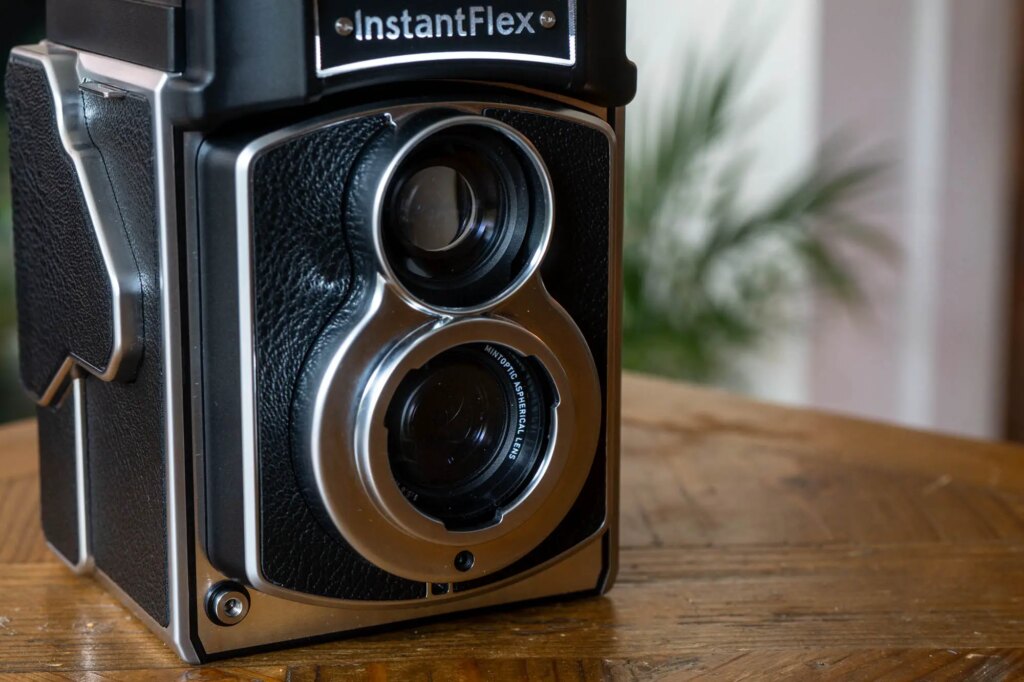
I guess this is how and why I am a little different from some, or perhaps even many instant film photographers. Without wanting to stereotype, I tend to think of photographers who enjoy modern instant photography as people who don’t really mind the serendipitous nature of the medium and approach it most commonly affords. There’s no judgement from me here at all. I’m very supportive of the idea that photography is a broad church and people should be able to enjoy it however they like without judgment from others. For me though, in the approach that a camera like the Sofort forces on me, there’s a bit too much serendipity. There’s the camera and all the weird and wonderful decisions it’s liable to make and then there’s also the film that just by its nature can and will throw you a curveball. For some, this is the whole fun of it. For me, I can embrace serendipity in photography, but with it I need to feel like I have some control or else I can find myself feeling like a bystander to the process rather than a part of it.
That, in short, is why a very much more manual Instax camera such as the InstantFlex TL70 Plus would intrigue me. The reason I’ve never tried such a camera before is that they’re usually a fair bit more expensive than the automatic ones, and I’ve never been certain that the investment would actually result in me enjoying instant photography to a degree enough more that the investment that it would be worthwhile. This camera has changed my mind. It’s far from an inexpensive box of tricks, but I really have enjoyed the experience of shooting with it!
Mint InstantFlex TL70 Plus Specs
First some specifications. The Mint InstantFlex TL70 Plus is a Instax camera that takes Instax Square format film. There is another InstantFlex TL70 from mint that takes the smaller Instax mini film, but I haven’t tried that so I’m not able to make comparisons unfortunately. That said, having spoken to a few people about this camera it does sound like it’s something of an upgrade, and not just in terms of the film size.
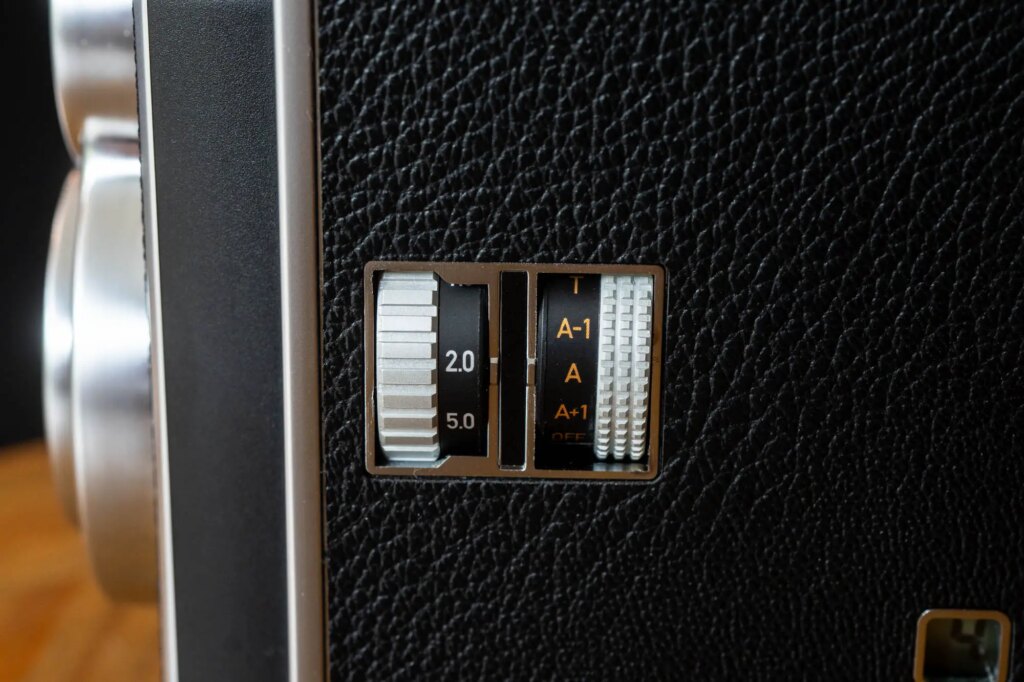
As mentioned the camera has full manual capabilities. The focus is manual with no option for auto modes. Focus is set via a wheel on the side of the camera. It’s a TLR (Twin Lens Reflex) camera. In case you don’t know what that means, you focus via a screen that’s under the flap on the top of the camera. Focusing is achieved through the upper lens which is coupled to the lower taking lens. You can read more about TLRs here.
The aperture is also totally manual. It’s controlled by a wheel under the front of the lens with apertures ranging from a maximum of f/5.6 to a minimum of f/22. I suspect some TLR users would be a little disappointed at the slowness of this maximum aperture, whereas Intant film users will probably be a bit more excited. You can count me in the latter group. f/5.6 is plenty bright enough for a bit of shallow depth of field with a 70mm lens – and it’s certainly brighter than the f/12.7 lens on the Sofort!
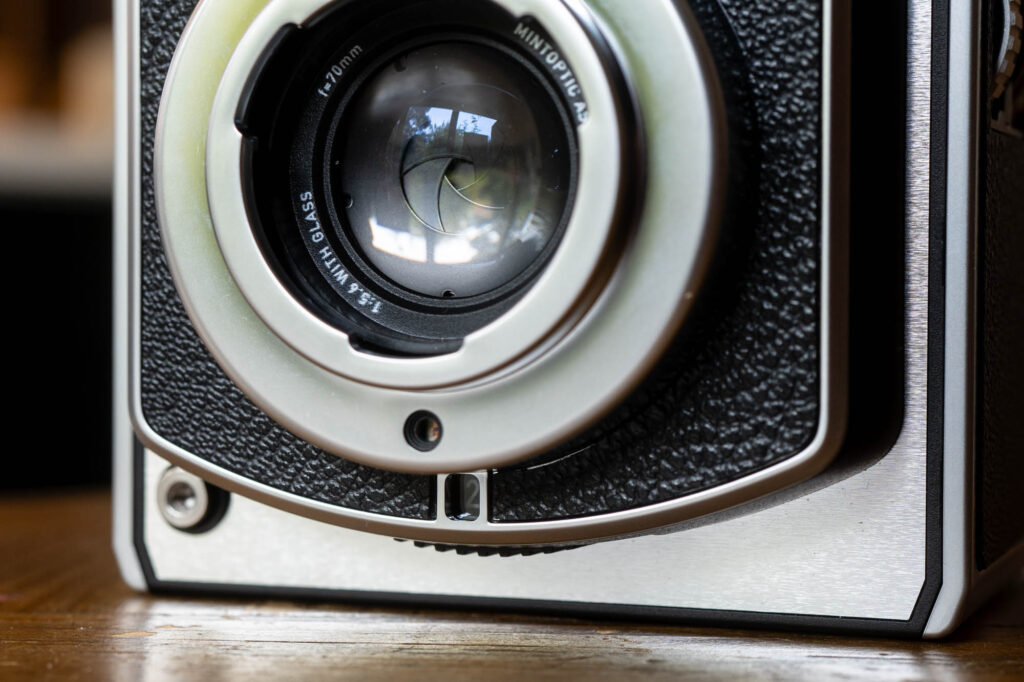
The shutter is both manual and automatic. There’s a range of automatic modes for -1, correct and +1 stop autoexposure. Manual speeds range from 1 second to 500th of a second with additional T and B modes. My kit for review also came with a series of ND filters which clip onto the front of the lens to allow the use of wider apertures in brighter light. Usefully, the Mint InstantFlex TL70 Plus also indicates which ND filter is required for correct exposure if you try and set the camera to a too wide aperture for the light, or indeed if the light is just too bright. Thanks to Alex at the Analogue Spotlight for explaining this to me after didn’t know what the number in the viewfinder readout meant when I took this photo:
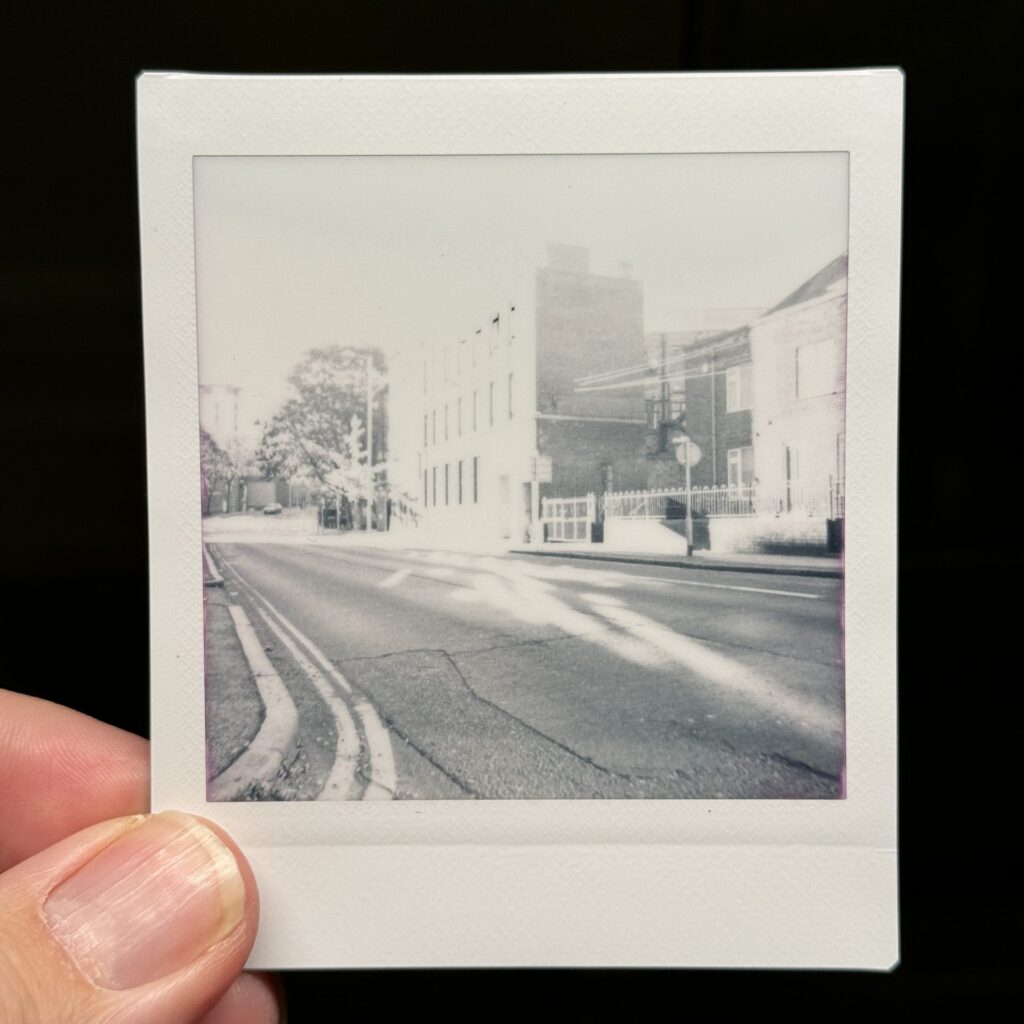
After he explained, I went back out and took this photo:
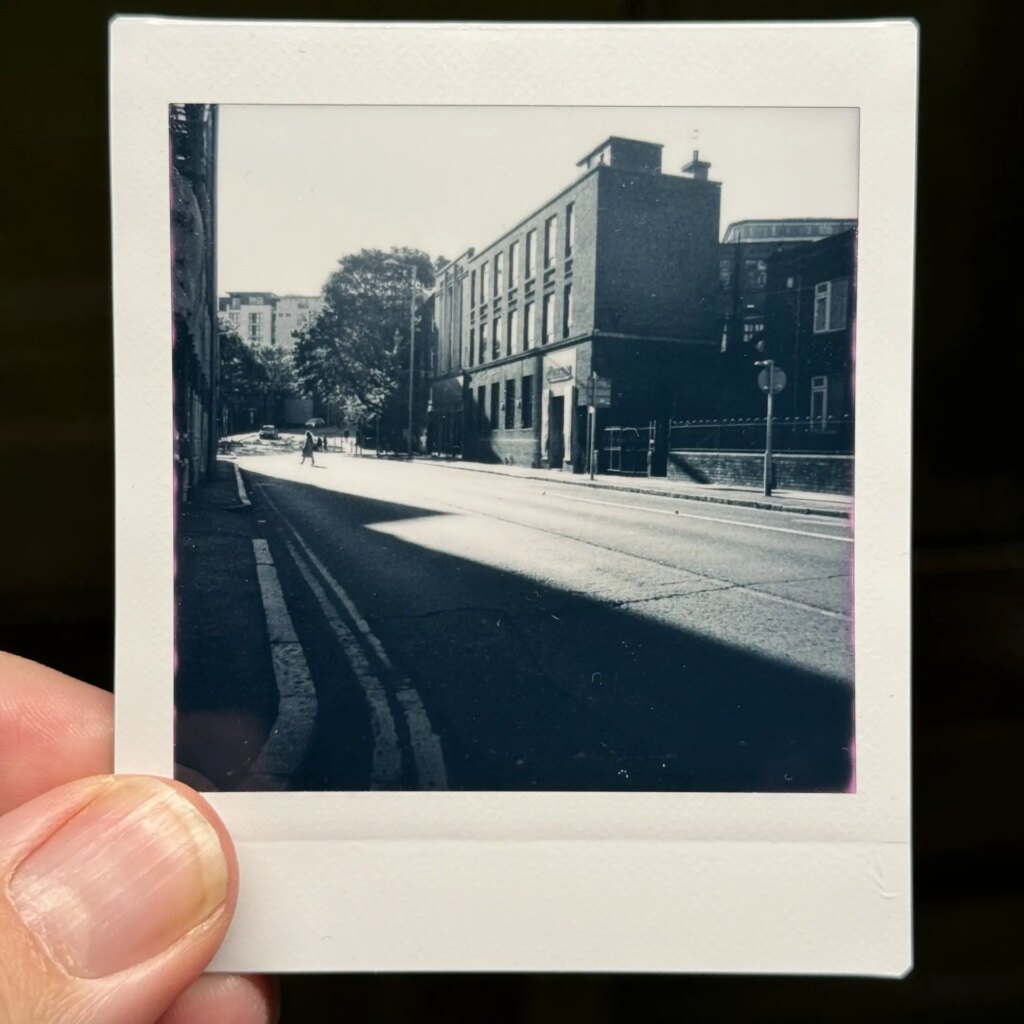
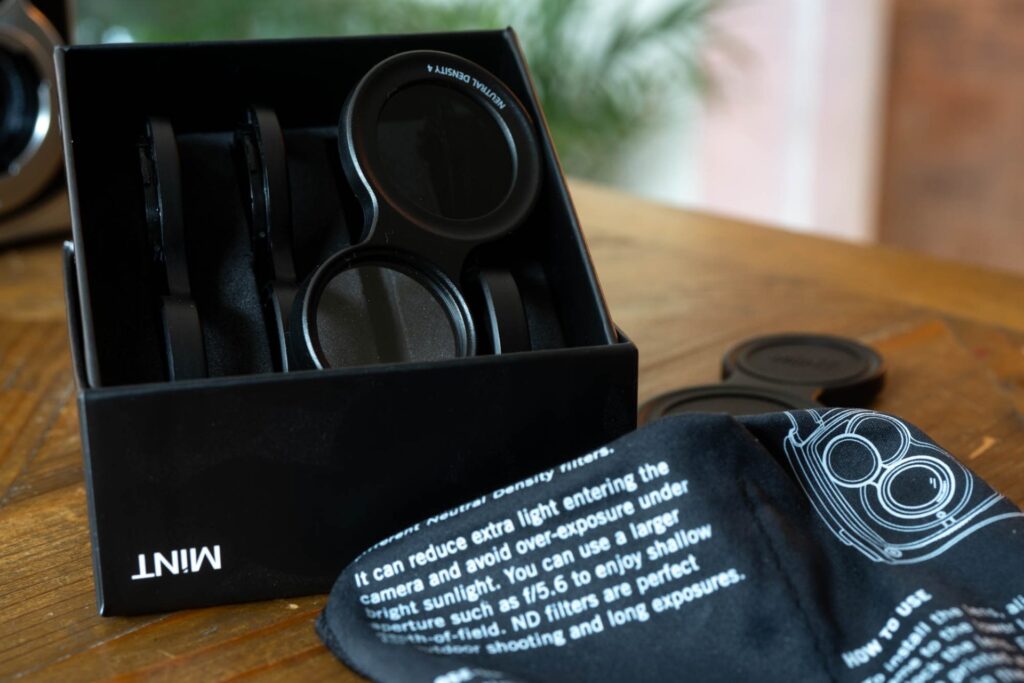
Finally, there’s also a little pop out flash which though fairly low powered, did let me take this next photo in a low-lit pub in Nottingham after the first day of the Spotlight.

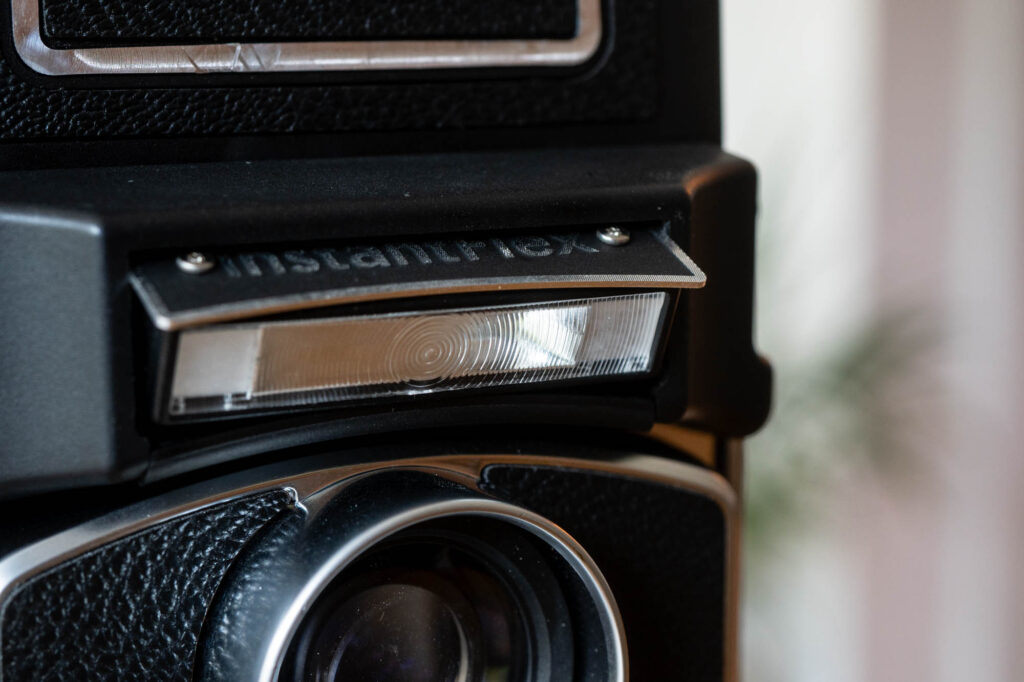
Size, weight, feel and use
Looking at the pictures of the Mint InstantFlex TL70 Plus before it arrived I convinced myself it looked perhaps a little unwieldy compared to the average TLR. Of course, there’s no real average TLR. Mamiyas the likes of the C330 always surprise me just how big they are. Rolleiflex TLRs tend to have the opposite effect on me – they seem so compact and refined.
The InstantFlex TL70 Plus is definitely bigger than Rollei. It feels wider than any TLR I have interacted with. I say “interacted with” as I haven’t shot many of the things at all. I have a Lubitel (also small) and I’ve previously – though some years ago now – shot a C330. I’ve fondled many a Rollei, but never shot one. I’ve never really got on that well with them – I tend to find myself very confused by the process of framing to a degree that I end up feeling like I’m swaying side to side. I don’t think this is unusual, it’s a hurdle I think all TLR photographers have to overcome as part of the learning curve, I’ve just never been motivated to try. Hence TLRs being low on my list of favourite cameras. Anyway, I digress. The point is, the SL70 Plus isn’t a small feeling camera. Not in the slightest.
But, that’s not to say it’s unpleasant to use. It’s not too heavy for a start. In fact, it’s very light indeed – almost to the point of it feeling like it might be a little fragile. I wouldn’t want to drop it… but then, I suppose I wouldn’t be very happy with myself if I dropped a Rolleiflex either. That said, if you asked me which camera out of a Rolleiflex and a Mamiya TLR I thought would last longer given the rigours of regular long term use, I’d struggle to answer. Whereas, if you asked which out of either of those cameras compared to the InstantFlex TL70 Plus, I’d definitely put my bets on one of the vintage cameras as having the best chance of long term survival. As I have mentioned, I recently took the InstantFlex TL70 Plus plus to the Analogue Spotlight event in Nottingham, and this was the opinion that those there seemed to share with me about it too. It’s far from the case that it feels poorly constructed, made of cheap materials or even shows any signs of specific lower quality. It’s just there’s something about its lighter weight and predominantly plastic body that gives it a little bit of a fragile feel to it. Of course, the lighter weight isn’t all a bad thing. Tucked safely into my camera bag, I didn’t really think much about being there, despite carrying it around Nottingham for the weekend. It’s also worth noting that Mint provide 5 year warranty with their cameras, to they are clearly confident in quality.
There was another factor about this camera that surprised all of those who picked it up at the Spotlight, and that’s the viewfinder. Perhaps it’s because most people experiencing TLR viewfinders are experiencing old ones on old cameras. Or it may be that focusing screens on older TLRs are better designed for critical focusing over a brighter framing experience. One way or another, the viewfinder on the InstantFlex TL70 Plus is exceptionally bright and very nice to frame with.
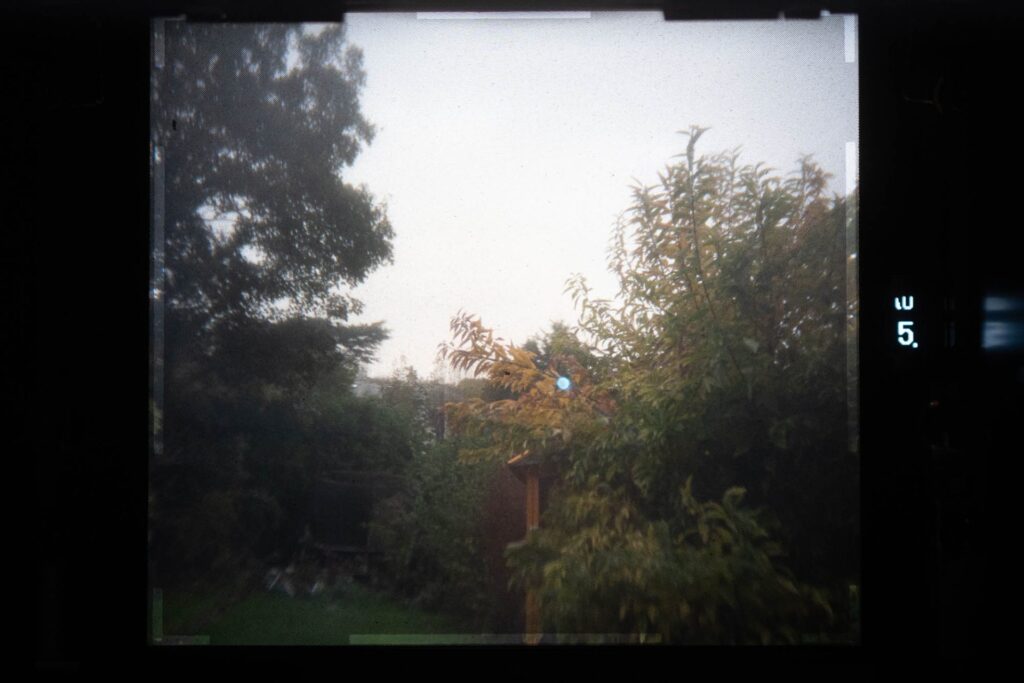
For all that it’s very bright, I don’t find it amazingly easy to focus with though. Now, I should say at this point that I’m not very hugely experienced when it comes to focusing with TLRs, or any camera with plain Fresnel screens, but, I’m not sure the image quite “pops” into focus as well as I have seen when focusing similarly on some other cameras. As such, I have found myself using the distance markings on the focusing wheel on the side of the camera more than the screen itself to be comfortable with my focus settings. One way or another, even at wider aperture settings I don’t really feel like I’ve had many issues with focusing. One of the advantages of such a small photo at the end of the process is that focus isn’t that critical, so if the overall brightness of the screen does come at the expense of the ability to critical focus, I think the compromise between the two factors has been well made. I should also say that the little pop-up magnifier helps a bit if you’re really concerned about perfect focusing, though even using this I don’t find the focus “pop” I felt I would have liked to see.
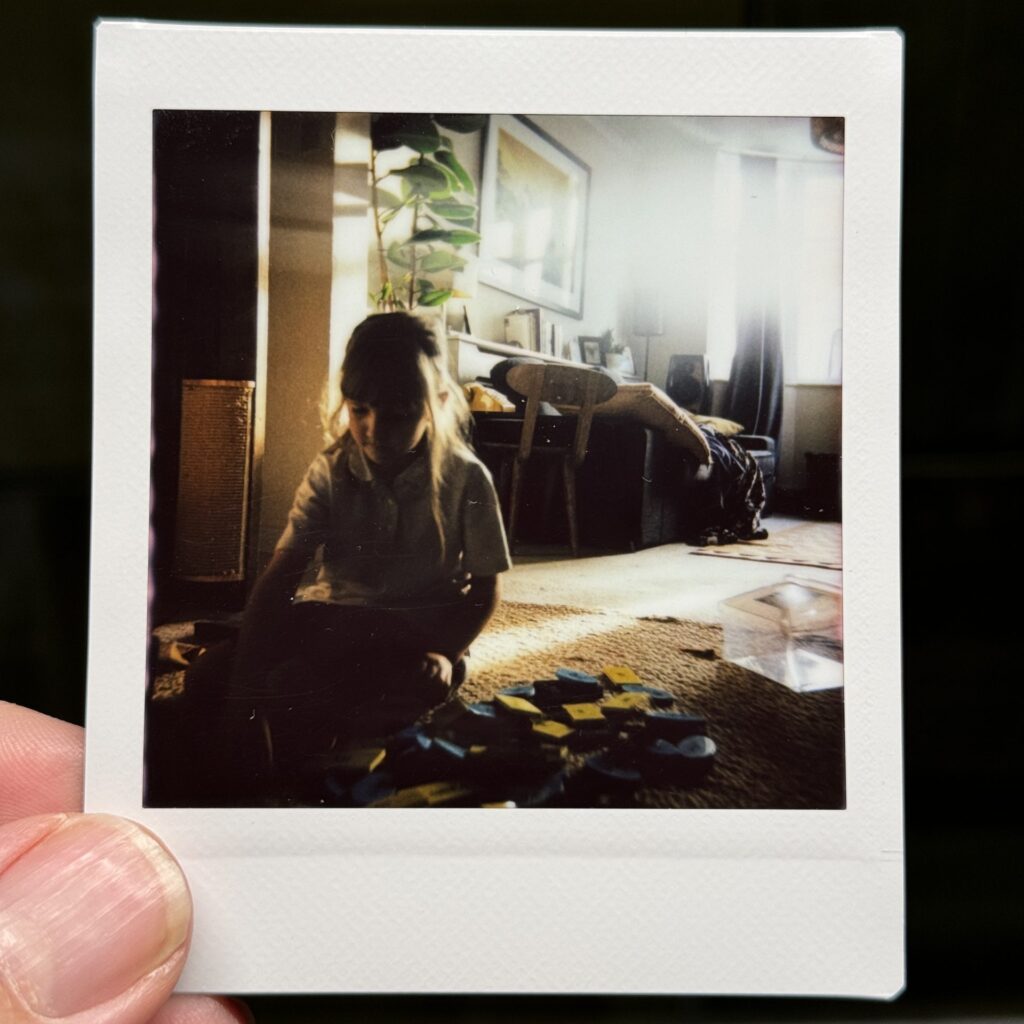
Whilst on the viewfinder and viewing experience I should also mention the settings readout next to the viewfinder. Looking down into the finder there’s a little readout of useful information to the right of the focusing screen. In addition, upon half press of the shutter button, there’s also a green for go/red for stop exposure indicator. In auto mode it just tells you the selected aperture and whether or not the correct exposure is within the shutter speed range. If it is, the little green light illuminates. If it isn’t the red light does. Too little light and it gives you an up arrow to indicate too much light and it will suggest a ND filter by the value of the filter (this is the bit that Alex explained to me). The limitation here is that there is never any indication of the shutter speed it’s going to use, ie a green LED could mean there’s enough light, but the shutter is going to fire at 1 second. Because of this, the better way to shoot in lower light is probably to use the manual shutter control.
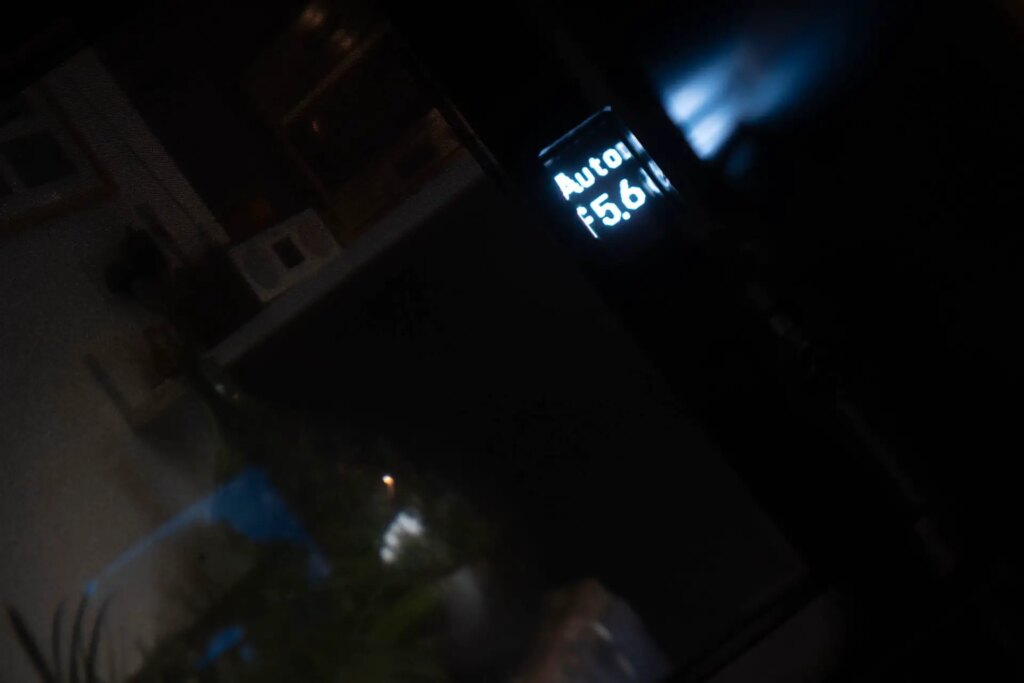
In manual mode, the little screen shows the shutter speed, the aperture and then when you half press it shows you an hour glass shaped readout that indicates how far either over or under exposed you are. The only limitation here is that the once the shutter button is half pressed, changing the shutter speed doesn’t update the exposure readout until you release and then half press again. This can make obtaining correct exposure ever so slightly slower than I might have liked, though in practice I found I got used to the way it works pretty quickly.
Overall, the Mint InstantFlex TL70 Plus is also really pretty easy and logical enough to use. That said, there is a short learning curve in terms of the control layout. The thing that made my eyes cross for the briefest of seconds is that the aperture is controlled by the larger dial under the lens and focus is controlled by one of the smaller dials on the side of the camera. The other dial on the side is the shutter speed dial, so it initially felt like it would have made more sense to me if the dial under the lens was the focus and the dial on the side was aperture. I imagine there’s a very simple mechanical reason that the controls are laid out like this, but actually having the focus dial on the side started to make more sense to me as I used the camera more – though, of course, that’s because I was using the distance markings which are more easily visible on the side of the camera than they would be if I had to keep looking g at the front of the camera where the aperture is displayed. Your mileage may vary here. One way or another, that’s where the controls are, and after only a very short time I became accustomed to them.
Loading, taking a shot and multiple exposures
One final thing I wanted to talk about the process of using the camera is what happens when load the film and actually take a photo. Not least because it’s the part of the process that confused me and indeed made me smile the most when I first experienced it.
First, loading the camera. The back pops open and the film pack pops in. Initially I couldn’t see where the photos were going to exit the camera, so loading the film with the film exit pointing upwards and info on the back of the film being the correct way up didn’t make any sense to me. Regardless, I loaded it and closed the back expecting the dark slide from the film pack to pop out. Nothing happened. I pressed the shutter on the camera thinking that might eject the dark slide. The shutter fired, but still nothing happened. At this stage I decided to open the instructions and was made aware of the eject button on the side of the camera under the frame count LCD. I pressed that, and the screen changes from ‘C’ to 10 and the dark slide ejected from the top of the camera behind the focusing screen within the focusing hood. I didn’t expect that at all – I don’t know what I expected, but it wasn’t that. I then framed and took my first photo. The shutter fired and then, again, nothing happened until I pressed the eject button. It was at this point I understood what was going on and why the camera has been designed like this. The idea here is that it very easy to shoot multiple exposures. You can press the shutter as many times as you like before ejecting the film. I suspect this is probably quite common in more manual instant film cameras and backs, but as a relative newbie, it seemed like a really clever way to design the camera to work!
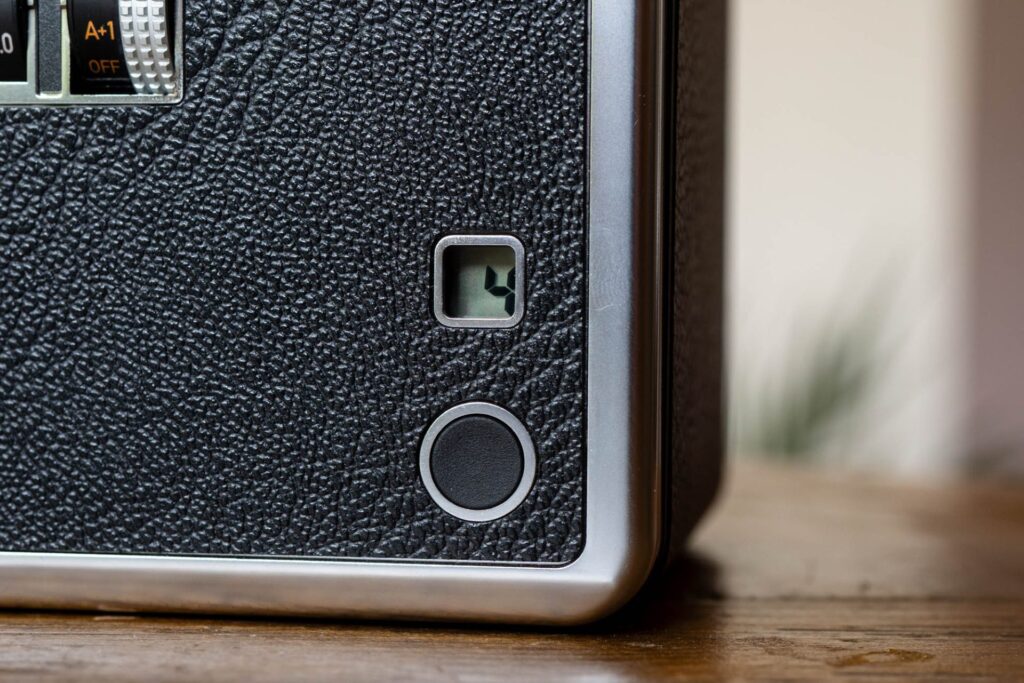
Image quality and results
No review of a camera like this would be complete without some comments on the image quality. Though, I feel like comments about image quality when the discussion is around instant film are somewhat limited by the image quality of the film itself. I’m also a little limited by my own level of personal experience here. As I hope I’ve made clear, I’m really no expert when it specifically comes to instant cameras, premium or otherwise, or the film itself.
With all that said, I think it’s fair to say the quality of the images out of this camera is pretty good. I must admit, the first thing I noticed was the shallow depth of field. Combine this with the warmer tones of the film (and lens..?), especially for indoor/artificial lighting images, and I was really pleased with the first few images I made. in fact, that’s an understatement, I was blown away by them!
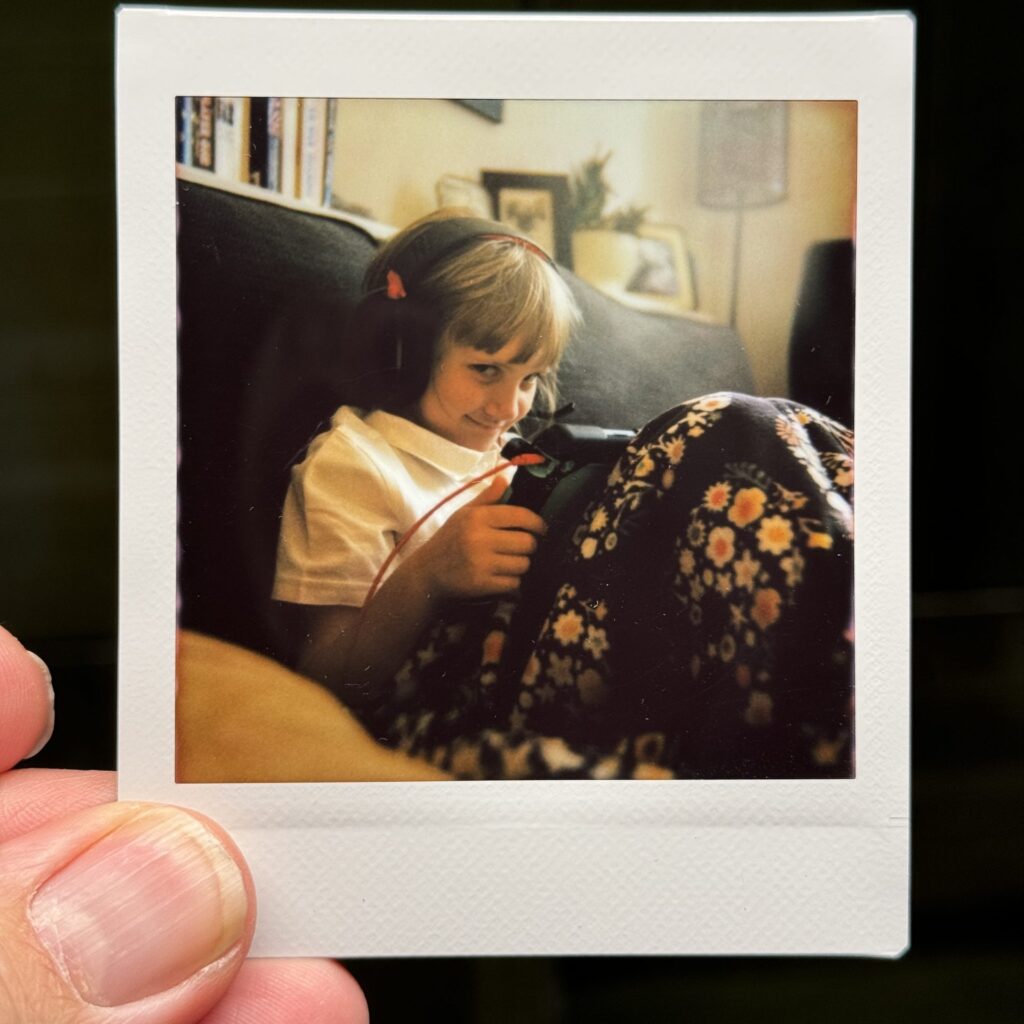
Since then I’ve had fairly consistent results. There have been a couple of occasions where I haven’t quite understood why the result has been exposed incorrectly. There’s also been a couple where there’s been weird lighting effects that I haven’t been sure I could put down to lens flare or something else. On the whole though, I’ve been pretty happy with them.
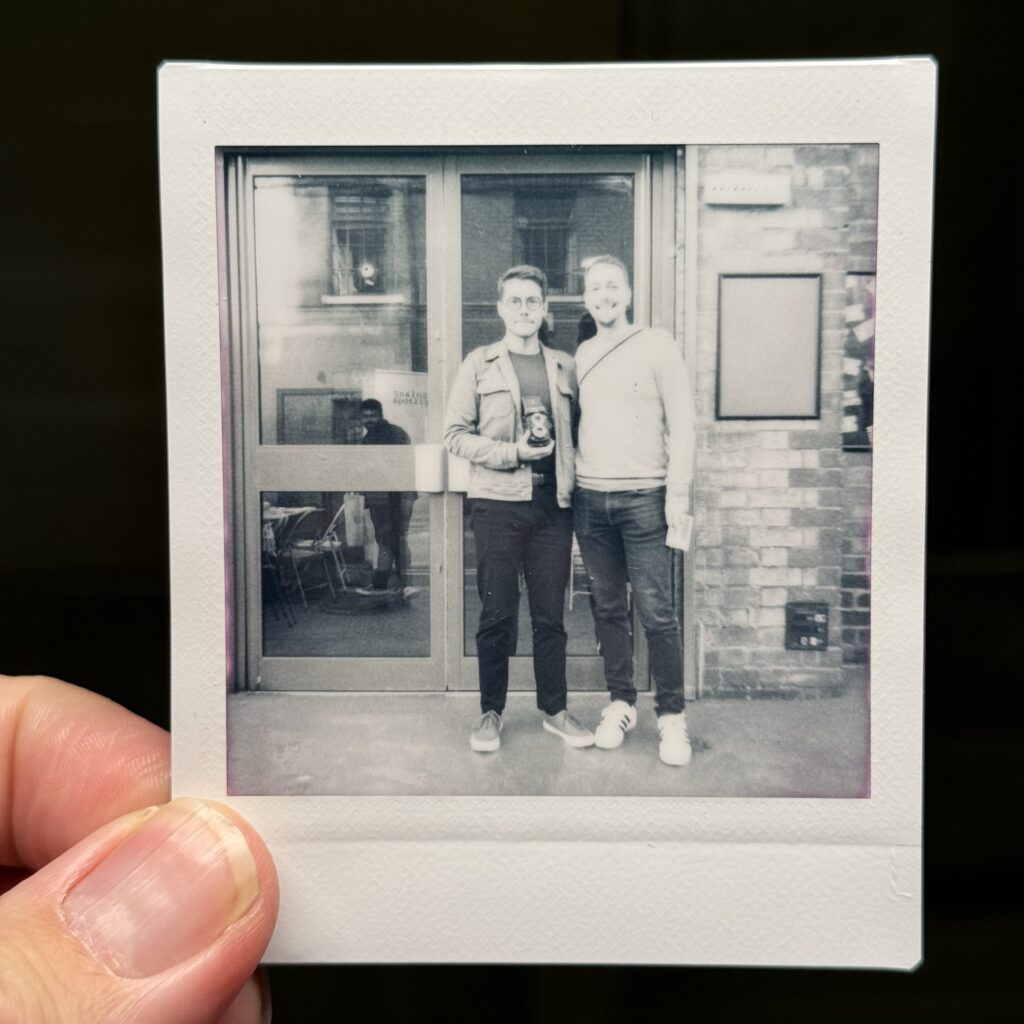

I have had a couple of occasions where I’ve been a little frustrated by the limited exposure range of the camera and have come unstuck through forgetting to take the ND filter set out with me. One particular occasion was on a walk down to Durdle Door where I really wanted a nice shot of the rock formation but found I had run into what the Mint InstantFlex TL70 Plus was telling me where overexposure issues even with the camera at f/22. Fortunately, a bit of what the camera deemed as overexposure ended up suiting the image as – despite it being definitely overexposed – it brought the detail out in the rocks. Of course, the detail in the sea and sky was largely lost, but I’m happy with the outcome nonetheless.
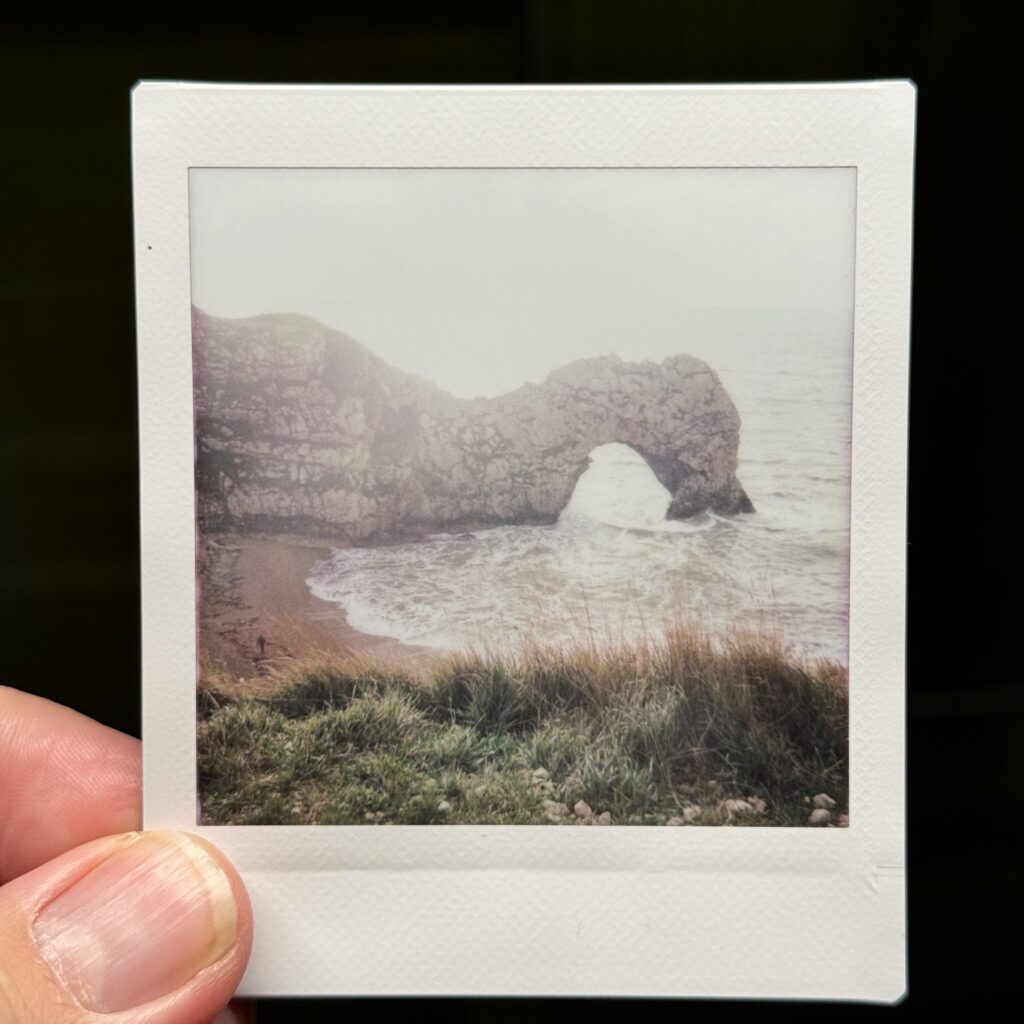
This experience made me reflect on the limited dynamic range of the film and the camera’s built in light meter. Had I shot this using the settings the Mint InstantFlex TL70 Plus deemed as correct, I might have experienced underexposure in the rocks. I suspect this is why the camera has the -/+1 espouses options. This particular shot is effectively back lit – more experience with the camera and dynamic range of the film probably would have made me chose the +1 exposure option to achieve a shot closer to this than one where the sea was exposed well. As it stands I’m still very much on the learning curve of both film and camera so I was just lucky. What I do appreciate about the SL70 Plus though is that once I get over the learning curve, I feel like the camera has enough about it to let me achieve this sort of shot consciously, and – at least within the limitations of the film – consistently. Thanks to it having the option for totally manual overrides, there’s always the option to use a more precise external meter too.
Something else I’ve noticed is that thanks to the smaller format, image sharpness doesn’t really matter a great deal. That’s not to say that this lens doesn’t produce a sharp image. I think – though I don’t have much to compare it to in the world of Instax – that it does an ok enough job for the format of film. What I mean is that since the camera so readily allows longer exposures I’ve found myself with a few images where the subject is motion-blurred.

Moreover, they’re motion blurred to a point that I might have even dismissed them as images had I taken them on a bigger format. Not the case here. In fact, I’ve ended up really enjoying the slightly softer look of some of the images I’ve produced with this camera. Choosing a slower shutter speed, bracing the camera for as much steadiness as possible then taking the shot with expectation of some softness that will impact the end result in an expected way feels like a creative process that leans into the limitations of the camera in a way that I can enjoy. That’s the polar opposite of how I feel about shooting the Sofort sometimes where so much more feels like it’s down to chance.
A few more photos from the Mint InstantFlex TL70 Plus

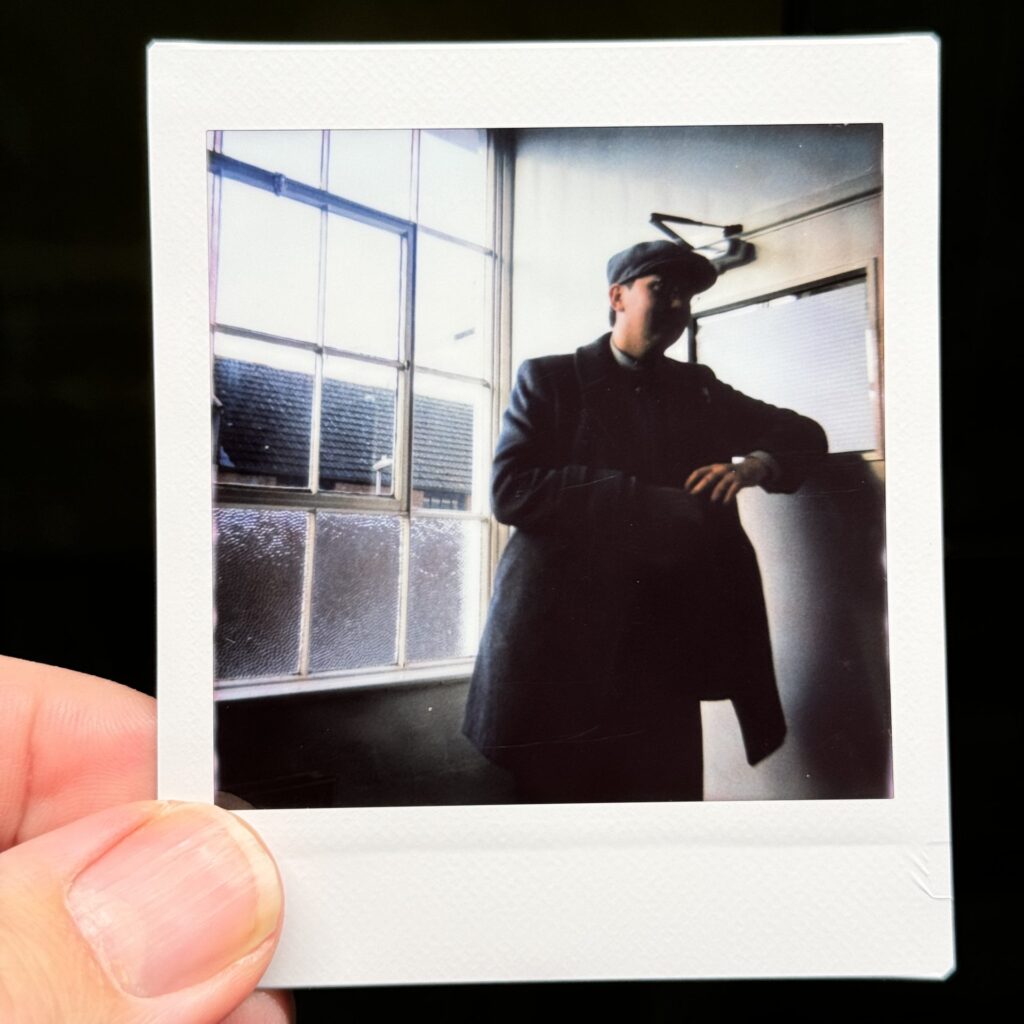
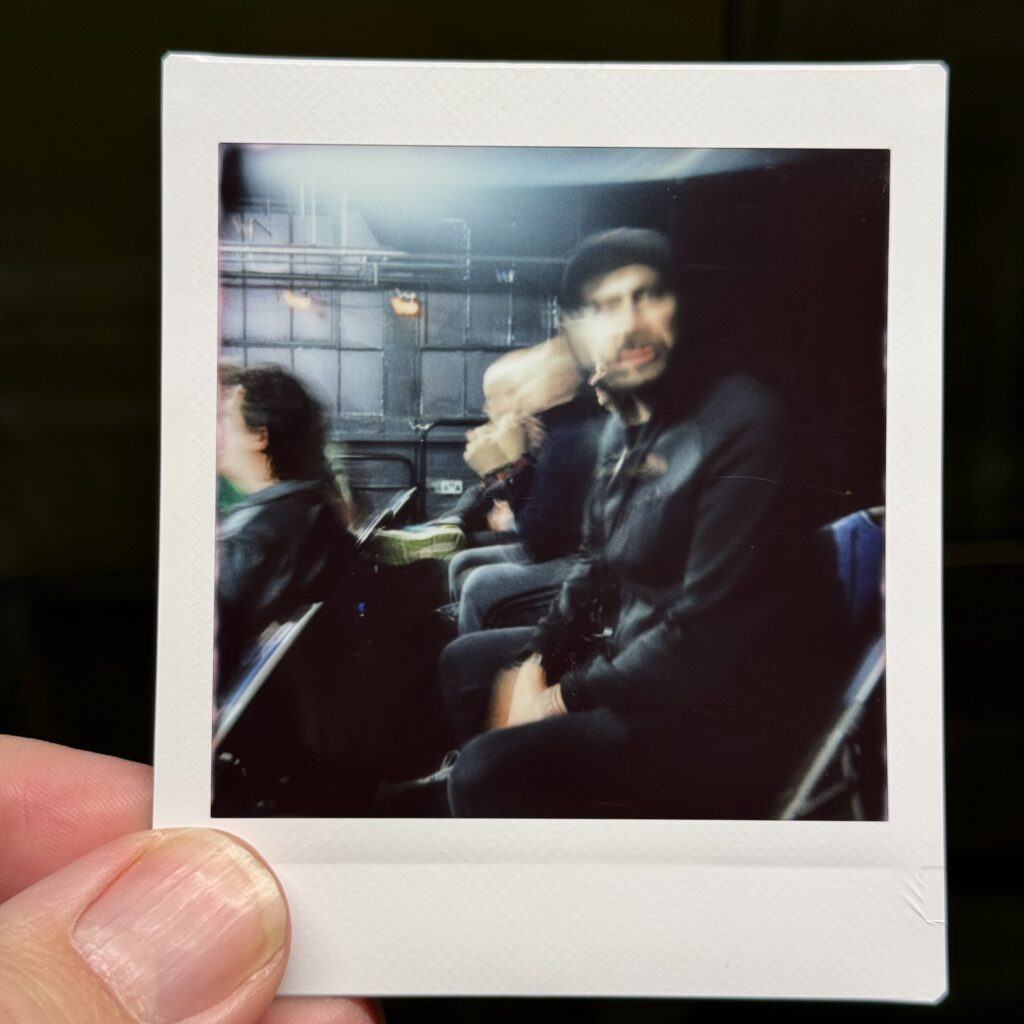
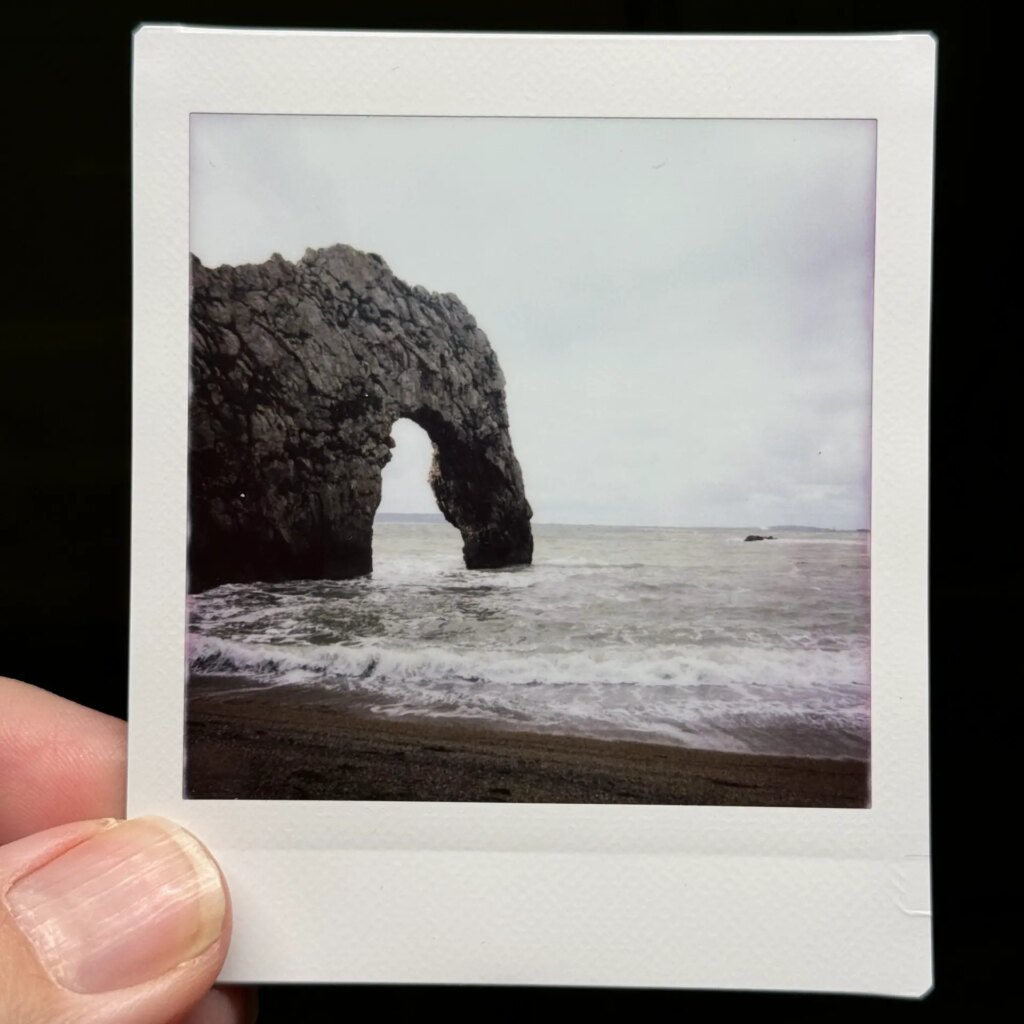
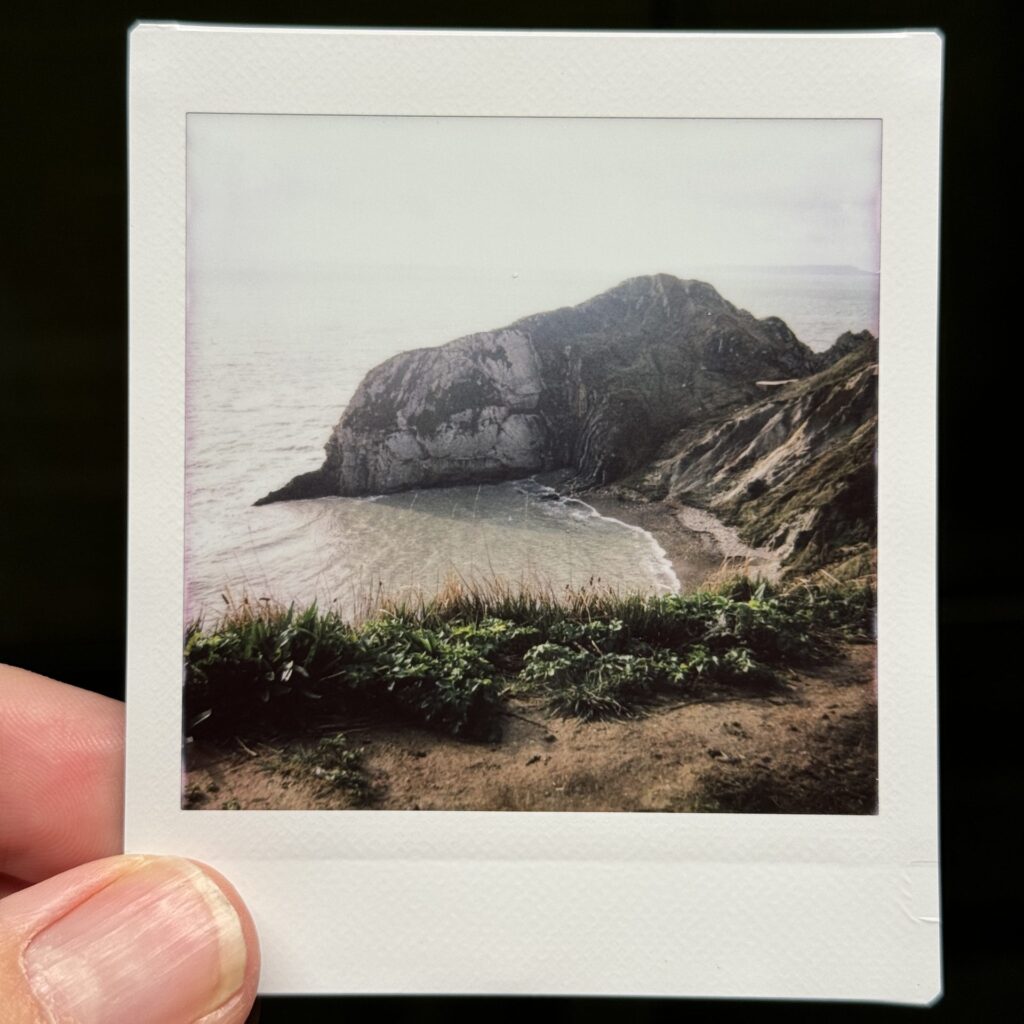
InstantFlex TL70 Plus – Final thoughts
In reviewing the Mint InstantFlex TL70 Plus I’ve forced myself to think about it objectively, and in doing so I have found myself unearthing a few shortcomings. The light weight feel of it that leads me to believe it might not be as hardy as some cameras out there, the lack of focus “pop” that made me feel as though I was happier relying on the distance marking on the focus control and the lack of shutter speed readout in auto exposure modes are probably the main items for a list of “cons” were I the sort to write such lists.
With cons come pros, and many of the pros too are based on objective observations. Whilst bulky, the camera is nice to hold and its light weight makes it feel much less of a drag to carry around than I expected it might be when I first picked it up. The brightness of the screen definitely makes for an enjoyable framing process, and above everything else really the relatively wide maximum aperture, and combination of semiautomatic and fully manual controls definitely makes for a machine that should allow more advanced creative control over the end result. The lens, at least in my limited experience of Instax camera lenses is pretty good too!
On a totally more subjective note, I have loved every minute of shooting this camera. I said earlier about my issues with framing with TLR cameras and a reluctance I have long felt to overcome the learning curve. Well, this camera has jump started that process to the point that I already feel significantly more comfortable framing a TLR. I’ve found myself swaying side to side a lot less, and though I still catch myself turning the camera the wrong way sometimes, it’s rare now. This has made me want a Rolleiflex of course, but that’s a story for another day.
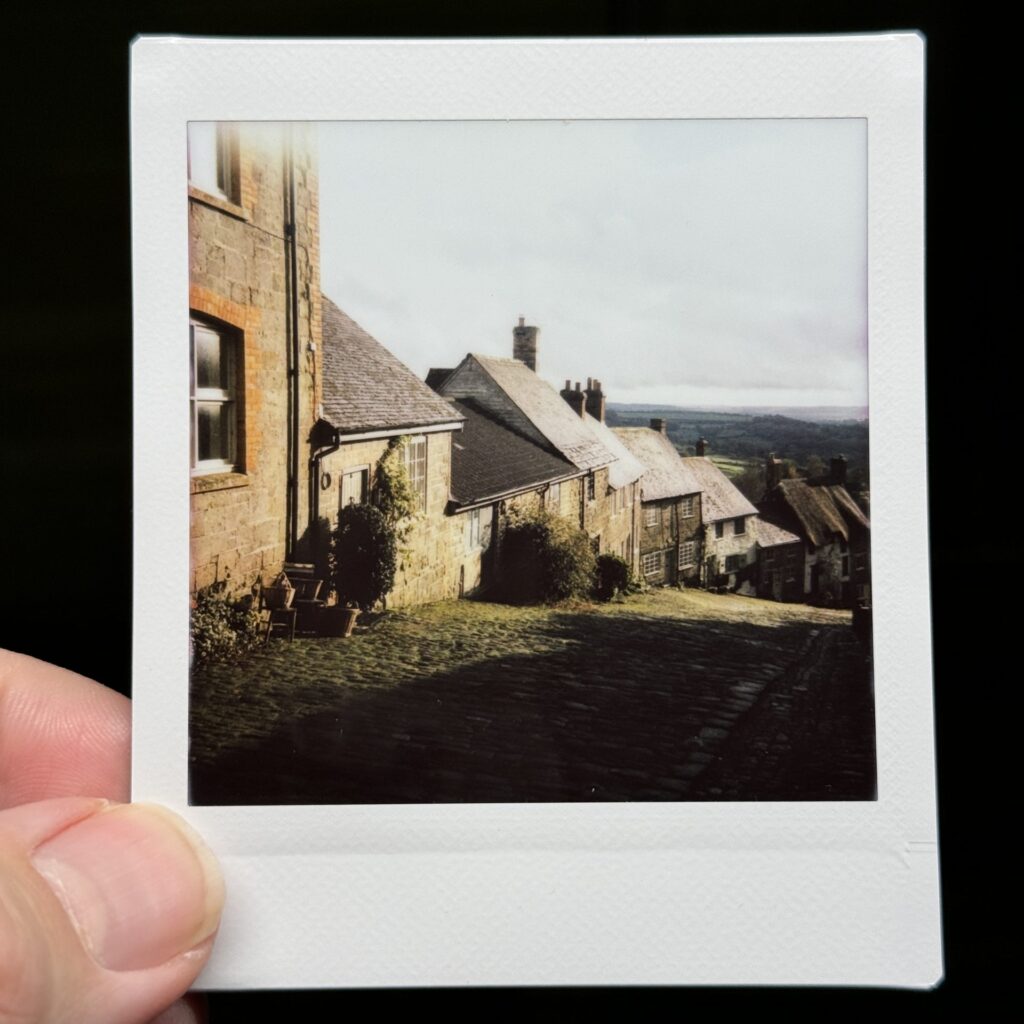
My appreciation of Instax/Instant film has jumped massively too. I took the above photo of Gold Hill in Shaftesbury (where the classic British Hovis advert was shot) on a short break the other week, and after I took the photo I couldn’t stop talking to my wife about how happy I was with the photo. Every time I stopped the car on the way home I picked it back up to look at and even tweeted a photo of it as soon as I got home talking about how much I liked it.
What I’m saying here is that this camera has enabled me to fully enjoy Instax film in a way I didn’t think I could. Now perhaps there’s an element of novelty here. This is the first Instax camera I’ve shot that’s allowed me to shoot in a way that feels that I have a tangible part in the creative process. I’m sure there are other cameras out there that would give me this feeling and experience too. But, to whatever degree that might be the case, I am still able to appreciate Mint InstantFlex TL70 Plus in objective terms where I honestly feel that the pros I have identified definitely outweigh the cons! In short, both objectively and subjectively, I really like this camera!
You can find out camera on the Mint website here where it is currently on a pre-release “early bird” offer. This will run until the end of 2023 when it will be officially launched.
Share this post:
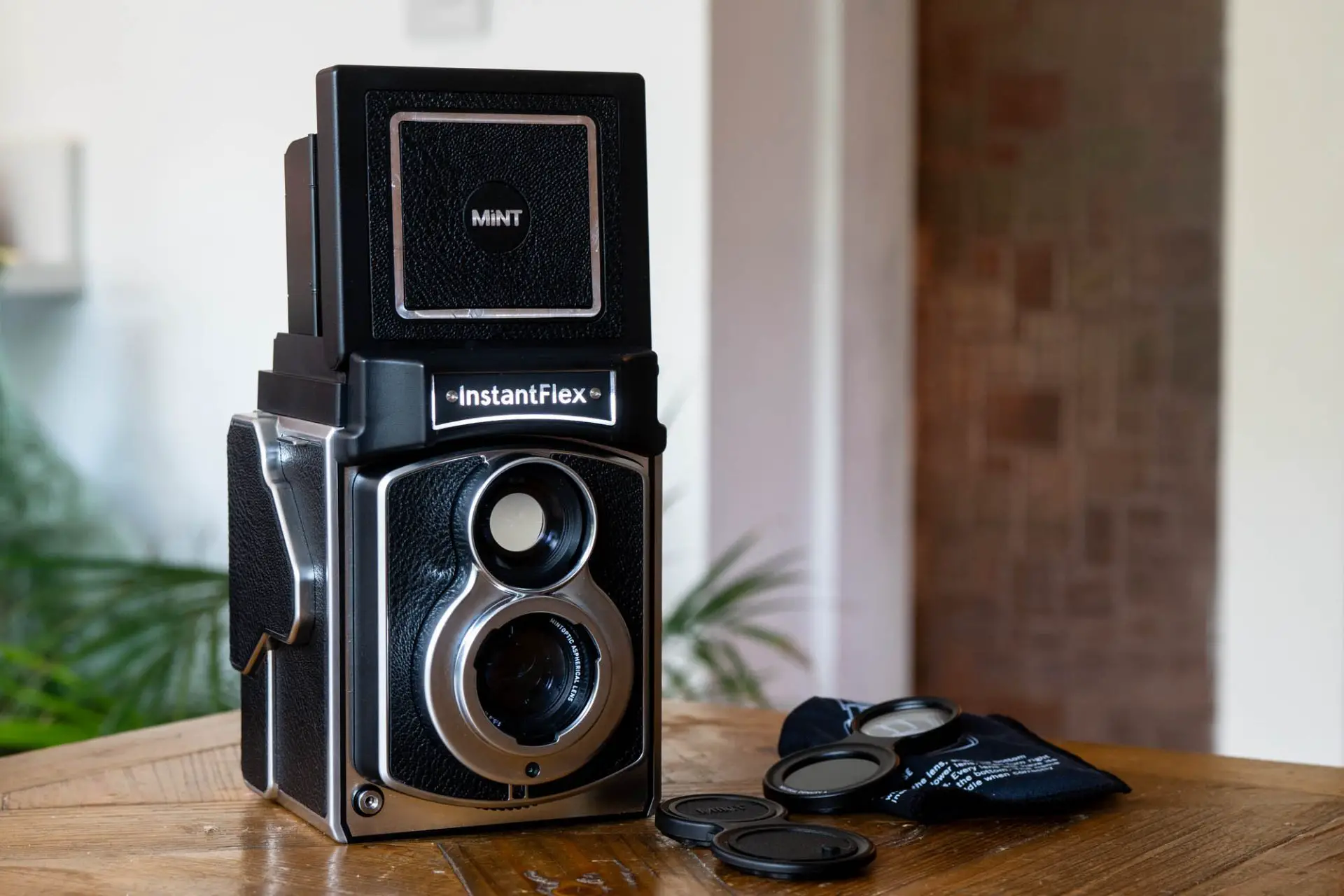
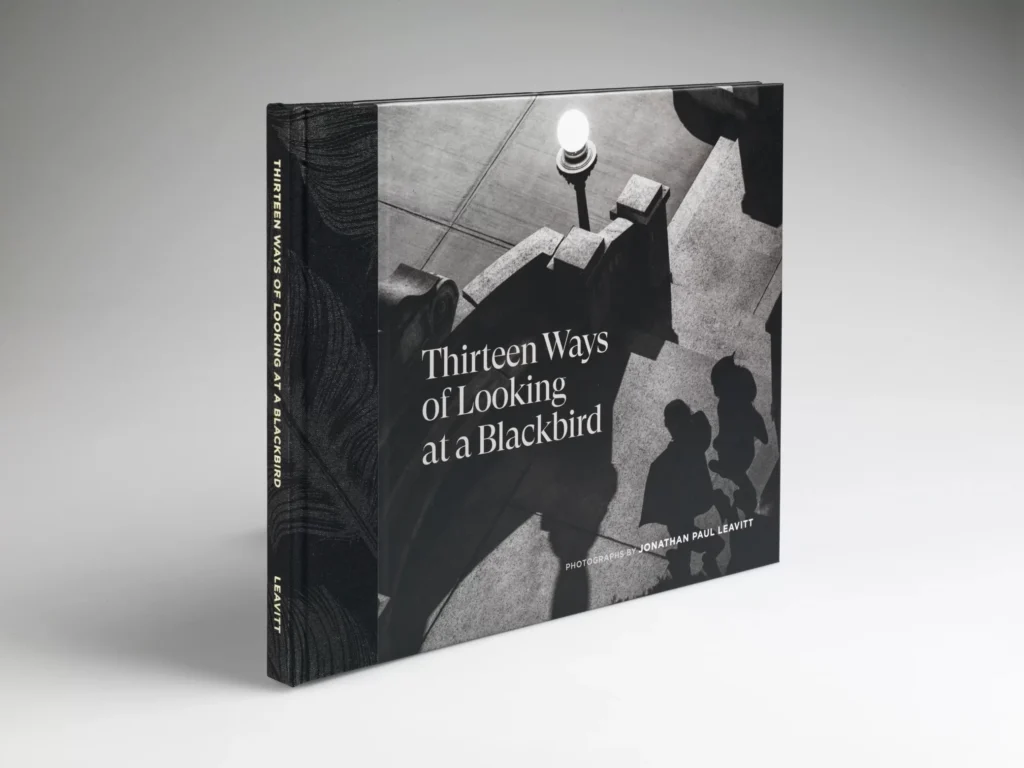

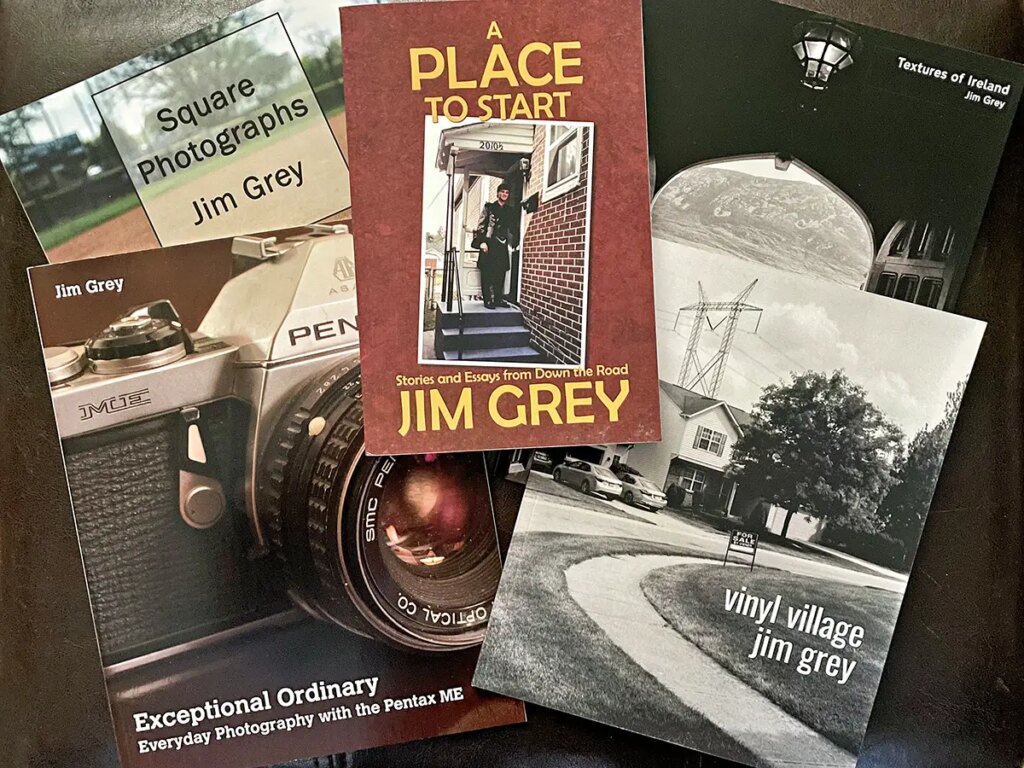
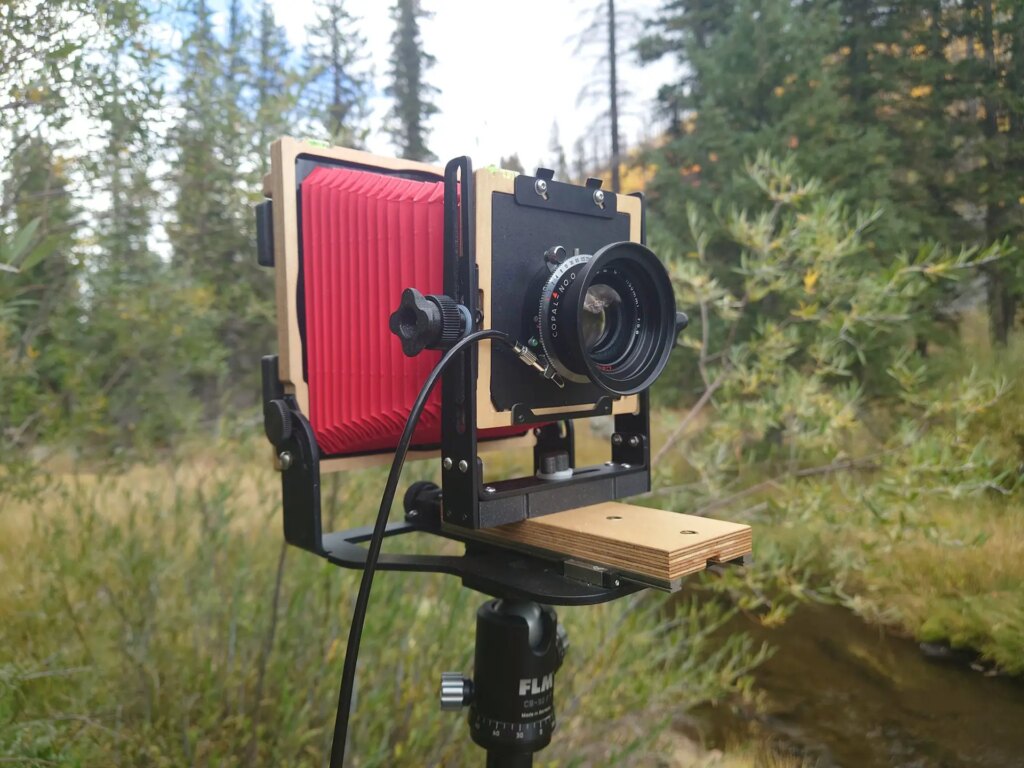




Comments
Bill Thoo on Mint InstantFlex TL70 Plus Instax Square TLR Review
Comment posted: 17/11/2023
Comment posted: 17/11/2023